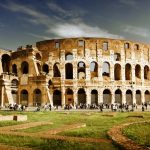Alexandria
welcome to Alexandria
DEAR CUSTOMER
WE WOULD LIKE VERY MUCH TO SHOW YOU THE HISTORY OF EGYPT OUR OWN WAY, BELOW PLEASE FIND THE MOST POPULAR TOURISTIC SITES HERE IN ALEXANDRIA (THE SECOND CAPITAL OF EGYPT).
LIBRARY OF ALEXANDRIA “BIBLIOTHECA ALEXANDRINA”
The Royal Library of Alexandria was once the largest library in the world. It was a major library and cultural center located on the shore of the Mediterranean Sea in the Egyptian city of Alexandria.
A new library was inaugurated in 2003, near the site of the old library and it comprises of The Main Library (which can hold up to millions of books), Six specialized libraries, a copy of the Internet Archive, Four museums, The Planetarium Science Center (PSC), The ALEX ploratorium (an Exploratorium for introducing children to science), The Culturama (A cultural panorama projected over nine screens), VISTA (The Virtual Immersive Science and Technology Applications system), Thirteen academic research centers, Fifteen permanent exhibitions, Four art galleries for temporary exhibitions and The Conference Center (which can accommodate up to thousands of people).
Today, this vast complex has become a reality, receiving about 1.5 million visitors a year
QAIT BAY CITADEL
Qaitbay Citadel in Alexandria is considered as one of the most important defensive strongholds not only in Egypt but also in the Mediterranean Sea coast. It formulated an important part of the fortification system of Alexandria in the 15th century AD.
It was erected on the exact site of the famous Lighthouse of Alexandria, which was one of the Seven Wonders of the Ancient World
Pompey`s Pillar
An approximately 25m red Aswan granite column with a circumference of 9m, was constructed in honor of the Emperor Diocletian. Originally from the temple of the Serapis, it was once a magnificent structure rivaling the Soma and the Caesareum. Nearby are subterranean galleries where sacred Apis bulls were buried, and three sphinxes.
Catacombs of Kom El-Shoqafa
Go down a winding stairway to see how deep the ancient Greco -Romans tunneled into the bedrock. Initially built for a single wealthy family practicing a fusion of Ancient Egyptian, Greek and Roman religion; the Catacombs of Kom el-Shoqafa entombed over 300 mummies. See bearded serpents crowned with the crowns of Upper and Lower Egypt, the hovering solar disc above the archway and customary funerary deities joined with Greco-Roman motifs.
The catacombs are monumental testament to the enduring myths of Ancient Egypt despite centuries of Greek and Roman rule. Kom el-Shoqafa means literally
“piles of shreds.” It was discovered by pure chance in 1900 when a donkey drawn cart fell into a pit
Montaza Palace and Gardens
The Montazah Palace, formerly the residence of Farouk, is surrounded by a large garden, with a number of other buildings standing nearby. The palace itself has been converted into a museum, and one of the buildings in the grounds is now a casino. The walls of the galleries in the three-story palace are hung with pictures, some depicting love scenes from the Middle Ages.
ALEXANDRIA AMPHITHEATER “THE ROMAN THEATER”
Located in the heart of Alexandria, Kom el-Dikka is an extensive Roman theatrical and residential complex. It includes the only known Roman amphitheater in Egypt, an impressively well-preserved structure composed of thirteen terraces. This was constructed in the traditional Greek style, with a flat stage in the center on the lowest level, and raised rows that ascend in steps surrounding three-quarters of the stage. The bench-style seats are all carved out of white or gray marble except for the first row, which is of red granite. The oldest part of the theater consisted of approximately sixteen or seventeen rows of seats, allowing for an audience of 700 to 800 people. It was eventually expanded to include exclusive “boxes” on the highest level for the upper echelons of society
© Copyright 2018 nicdark.com
Best Travel WordPress Theme



